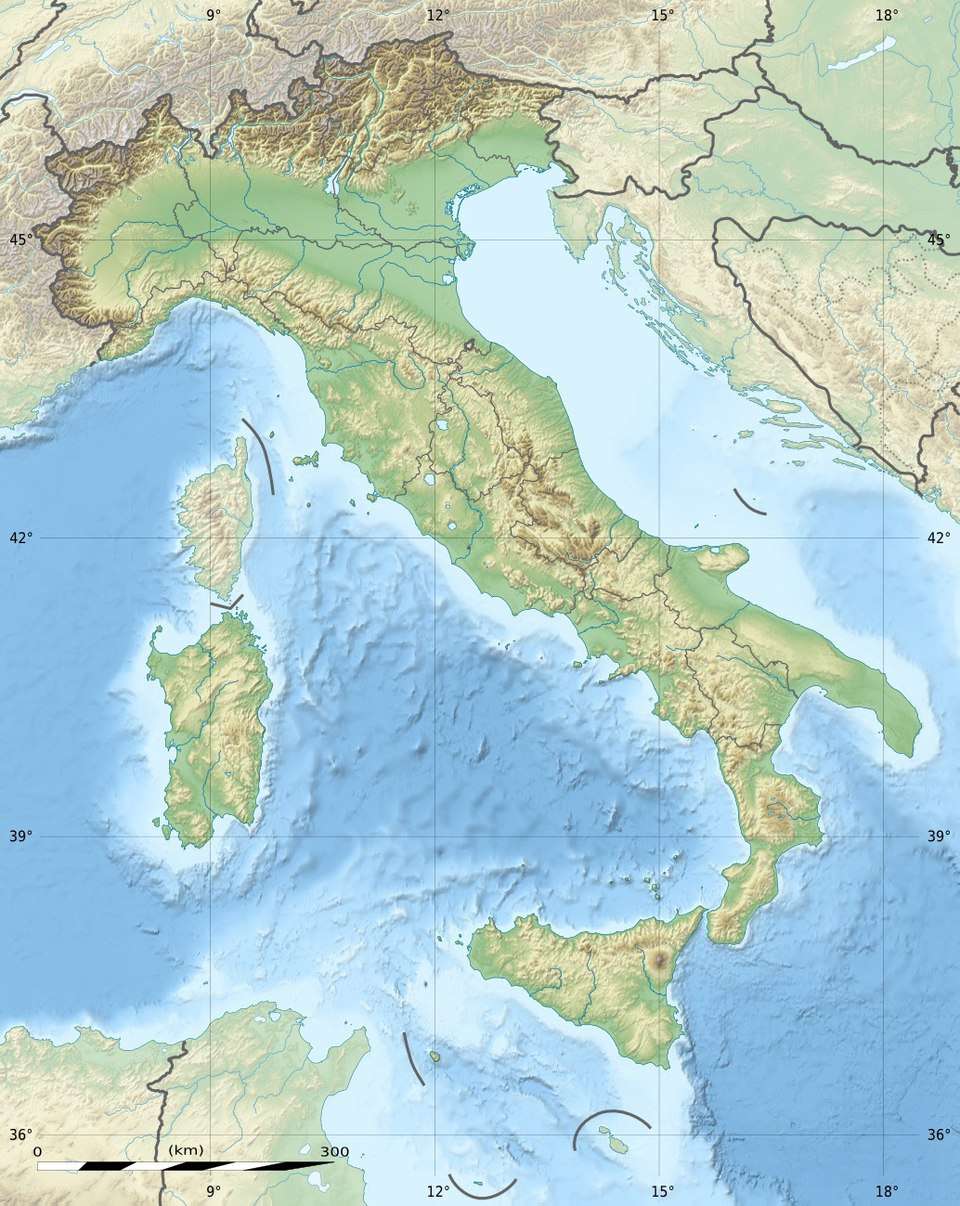62 Pompeii earthquake
 | |
| Local date | 5 February 62 |
|---|---|
| Magnitude | 5.2–6.1 |
| Epicenter | 40°42′N 14°30′E / 40.7°N 14.5°ECoordinates: 40°42′N 14°30′E / 40.7°N 14.5°E[1] |
| Areas affected | Roman Empire, Campania |
| Max. intensity | IX–X |
The 62 Pompeii earthquake occurred on 5 February 62 AD. It had an estimated magnitude of between 5 and 6 and a maximum intensity of IX or X on the Mercalli intensity scale. The towns of Pompeii and Herculaneum were severely damaged. The earthquake may have been a precursor to the eruption of Mount Vesuvius in AD 79, which destroyed the same two towns. The contemporary philosopher and dramatist Seneca the Younger wrote an account of the earthquake in the sixth book of his Naturales quaestiones, entitled De Terrae Motu (Concerning Earthquakes).
Geological setting
The epicentre of the earthquake lies within a zone of active extensional faulting, but close to the southern flank of Vesuvius. Analysis of focal mechanisms from the area around Vesuvius indicates that active faulting in the area involves NW–SE and NE–SW trending oblique-slip normal faults and E–W trending normal faults, part of the zone of active extension that extends the full length of the Apennines mountain chain, associated with continued opening of the Tyrrhenian Sea.[2] An association between earthquakes in the central Apennines and eruptions of Vesuvius has been proposed, but is not yet proven.[3]
Characteristics
The extent of damage has been used to estimate the magnitude of the earthquake. Estimates lie in the range from about 5 to 6.1.[4] The maximum felt intensity is estimated to have been in the range IX to X,[1][5] and the area of highest intensity was elongated roughly WNW–ESE.[5] Shaking was reported to have continued for several days,[6] presumably referring to a sequence of aftershocks. The focal depth is estimated to have been in the range 5–6 km.[7]
Damage
The towns of Pompeii and Herculaneum both suffered major damage, with damage to some buildings also reported from Naples and Nuceria.[5] Seneca reported the death of a flock of 600 sheep that he attributed to the effects of poisonous gases.[6]
Aftermath
The damage caused by the mainshock and the subsequent series of tremors was at least partly repaired in both Pompeii and Herculaneum by the time of the AD 79 eruption. A pair of bas-reliefs, probably from the lararium in the house of Lucius Caecilius Iucundus in Pompeii, are interpreted as depicting the effects of the earthquake on structures including the Temple of Jupiter, the Aquarium of Cesar, and the Vesuvius Gate.[8]
The earthquake led Roman philosopher, statesman and dramatist Seneca the Younger to devote the sixth book of his Naturales quaestiones to the subject of earthquakes, describing the event of 5 February and giving the cause of earthquakes as the movement of air.[6]
See also
References
- 1 2 NGDC. "Comments for the Significant Earthquake". Retrieved 29 April 2011.
- ↑ "Magnitude 6.3 – CENTRAL ITALY 2009 April 06 01:32:42 UTC". USGS. 6 April 2009. Archived from the original on January 6, 2010. Retrieved 30 April 2011.
- ↑ Marzocchi, W.; Scandone R. & Mulargia F. (1993). "The tectonic setting of Mount Vesuvius and the correlation between its eruptions and the earthquakes of the Southern Apennines". Journal of Volcanology and Geothermal Research. 58 (1–4): 27–41. Bibcode:1993JVGR...58...27M. doi:10.1016/0377-0273(93)90100-6. Retrieved 30 April 2011.
- ↑ Cubellis, E.; Marturano A. (2002). "Mt. Vesuvius: a macroseismic study of the earthquake of 9 October 1999". Journal of Volcanology and Geothermal Research. 118 (3–4): 339–351. Bibcode:2002JVGR..118..339C. doi:10.1016/S0377-0273(02)00301-3. Retrieved 30 April 2011.
- 1 2 3 Cubellis, E.; Luongo G. & Marturano A. (2007). "Seismic hazard assessment at Mt. Vesuvius: Maximum expected magnitude". Journal of Volcanology and Geothermal Research. 162 (3–4): 139–148. Bibcode:2007JVGR..162..139C. doi:10.1016/j.jvolgeores.2007.03.003. Retrieved 29 April 2011.
- 1 2 3 Seneca. Naturales quaestiones. VI De Terrae Motu. Retrieved 29 April 2011.
- ↑ De Carolis, E.; Patricelli, G. (2003). Vesuvius, A.D. 79: The Destruction of Pompeii and Herculaneum. L'Erma di Bretschneider. pp. 71–76. ISBN 978-88-8265-199-2. Retrieved 29 April 2011.
- ↑ Cooley, A.; Cooley, M.G.L. (2004). Pompeii: a sourcebook. Routledge Sourcebooks for the Ancient World Series. Routledge. pp. 28–31. ISBN 978-0-415-26211-8. Retrieved 29 April 2011.